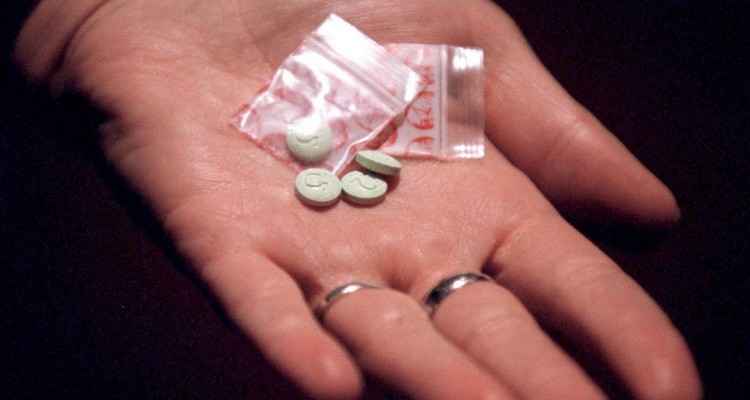A recreational drug is a pharmaceutical that is taken for no medical purpose. Instead, such a substance is consumed for pleasure or recreation. There are two broad classes of recreational drugs out there: street drugs that are manufactured or imported by criminals purely for recreational purposes and misused pharmaceuticals. The misused pharmaceuticals are legitimate drugs manufactured for medical purposes, which are then diverted to recreational use. Recreational drugs can lead to addiction, health or social problems and even crimes. Drug abuse is a common problem in many countries. In UK, about 376,136 people have been drug users and about 133,112 people regularly injected drugs.
10 Most Popular Recreational Drugs
1. Amyl Nitrates
 Also Called: poppers, TNT, amyls, kix, liquid gold
Also Called: poppers, TNT, amyls, kix, liquid gold
Harmful Effects: It is usually sniffed in liquid form and can cause a burning sensation around the mouth and nose.This drug is extremely flammable and can cause fire easily, especiallywhen the user is smoking. If the liquid is swallowed accidently, a severe chemical reaction leading to death or permanent disability may happen.
2. Methamphetamines
 Also Called: speed, ice, meth, crystal meth, crank
Also Called: speed, ice, meth, crystal meth, crank
Harmful Effects: Extreme changes in thought and behavior, including paranoia, anxiety attacks, panic attacks, homicidal thoughts, suicidal thoughts and violent outbursts. There is also a risk of permanent brain damage leading to mental illness. It can increase heart rate and blood pressure, raising the risk of heart attack. Besides,it can reduce inhibitions, leading to a greater chance of criminal and destructive behaviors like prostitution and theft.
3. Cannabis
Also Called: weed, grass, pot, puff, Hawaiian  Gold,Marijuana
Gold,Marijuana
Harmful Effects: Leads to negative emotions and behaviors, including anxiety, panic attacks, paranoia, delusions and extreme suspicion of others. Prolonged use could causeloss of concentration, impaired memory and mental illness like schizophrenia. Since most users smoke it, lung problems, such as pneumonia, are likely.
4. Ecstasy
Also Called: E, dolphins, crystal, Superman, Mitsubishis, MDMA, Mandy, brownies
Harmful Effects: The effects can vary widely because criminals use many different formulas when they make ecstasy. The main effect is extreme changes of mood: a person feels intense happiness, energetic and sexual arousal when they first take it. But when that wears off, one can suffer from intense anxiety and depression. Ecstasy can damage the brain, the immune system, the heart and the kidneys and even cause death. Since it reduces inhibitions, ecstasy can lead to risky sexual behavior and increase the risk of rape and venereal disease.
5. Cocaine
Also Called: coke, crack, white, powder
Harmful Effects: Reduced inhibitions and delusions of grandeur, which can lead to risky and destructive behaviors. It can damage the inside of the nose and cause nasal infections when sniffed. Cocaine can produce mental problems, including anxiety, panic attacks and depression. Excessive use can increase the heart rate and blood pressure leading to heart attack and death. Cocaine is highly addictive, so people often engage in illegal or risky behaviors to get it.
6. Heroin

Also Called: H, smack, brown, tar
Harmful Effects: Heroin is highly addictive because it produces feelings of happiness and relaxation. Many people cannot stop using it, so overdoses are common. An overdose can lead to loss of consciousness, stopped breathing and death. Heroin addicts often turn to criminal behavior like prostitutionbecause they are unable to work normally. Many addicts reuse needles to inject the drug, which can spread serious infectious diseases like hepatitis and HIV.
7. Ketamine
Also Called: Super K, K, Vitamin K, Special K, green, donkey dust
Harmful Effects: Ketamine can affect the heart and raise blood pressure leading to heart attack. Extreme changes in behavior, including feelings of confusion and fear, are common. It also can damage the bladder causing excessive urination. Many addicts injure themselves because they can no longer feel pain. There is also a high risk of exposure to hepatitis and HIV because addicts often share needles.
8. LSD (Lysergic Acid Diethylamide)
 Also Called: acid, blotter, flash, stars, rainbow, tripper
Also Called: acid, blotter, flash, stars, rainbow, tripper
Harmful Effects: It can make you frightened and confused, causing hallucinations and delusions. Some people can experience panic attacks and suicidal thoughts under its influence. Many users may experience “flashbacks” in which they relive past acid trips months or even years later.
9. Magic Mushrooms
Also Called: shrooms, philosopher’s stone, mushies
Harmful Effects: Since many users gather the mushrooms in the
wild, they sometimes consume poisonous fungi. Some users will experience nausea, diarrhea, pain and other stomach problems.Persons under the hallucinogenic effects are more likely to get into accidents. Besides, flashbacks are possible.
10. Mephedrone
 Also Called: M smack, charge, drone, M cat, meow meow, MC, charge
Also Called: M smack, charge, drone, M cat, meow meow, MC, charge
Harmful Effects: Extreme changes in behavior, including paranoia and anxiety attacks. There can also be a total loss of emotional and mental control leading to temper tantrums and violent outbursts. It can get you into mental and physical health problems by depriving your sleep. Because it can be snorted, there is a strong possibility of damage to the nose and the throat.
What Are the Risks of Using Recreational Drugs?
The potential risks of using recreational drugs are many. Some of the greatest dangers include:
- Many recreational drugs are highly addictive.
- Many addicts overdose a drug, leading to loss of consciousness, collapse, hospitalization and sometimes death.
- Loss of job and inability to find regular employment.
- Loss of income because of job loss or spending money on drugs.
- Criminal behavior, including prostitution, drug dealing and theft, in an attempt to get money to buy more drugs.
- Brain damage and permanent mental illness.
- Loss of social status and family.
- Many recreational drugs will react with antiretroviral medications, or ARVs, the drugs used to treat AIDS. This can cause serious interactions which can lead to death.